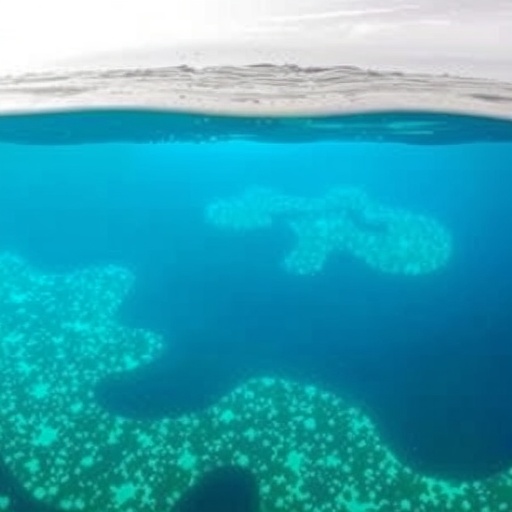As the world grapples with the increasingly apparent challenges posed by climate change and human activities, the study of water quality in vital ecosystems has become critically important. One such ecosystem that is receiving attention is Lake Xingkai, also known as Lake Khanka, which spans the border between Russia and China. This significant water body serves various ecological functions and supports a diverse range of flora and fauna. Yet, it is facing pressures from pollution and other anthropogenic activities that threaten its ecological integrity.
In a comprehensive study conducted by Kurnosova, Matveev, and Kataykina, the researchers delve into analyzing trends in water quality parameters and the trophic levels of Lake Xingkai. This research not only sheds light on the current state of the lake’s ecosystem but also offers insights into the future health of this precious resource. The multidisciplinary approach of this study encompasses both chemical and biological assessments, providing a holistic view of the lake’s environmental status.
The researchers employed a combination of historical datasets and contemporary measurements to evaluate the changes in water quality parameters over time. By examining various indicators, including nutrient levels, pH, temperature, and dissolved oxygen, they were able to establish a clearer picture of the lake’s health. The findings suggest that fluctuations in these parameters are not merely random occurrences but are indicative of underlying trends influenced by both natural processes and human interventions.
One of the striking observations from the study was the rise in trophic levels within Lake Xingkai. This increase signifies a shift towards a more eutrophic state, characterized by heightened nutrient levels and, consequently, increased productivity in the aquatic ecosystem. Eutrophication, while sometimes beneficial for plant growth, can lead to detrimental consequences such as algal blooms, which deplete oxygen and harm aquatic life. The balance within the lake’s ecosystem is essential for maintaining biodiversity and ensuring the resilience of the water body against external pressures.
The synergistic effects of pollution and climate change cannot be understated. The researchers identified that nutrient runoff from agricultural activities surrounding the lake contributes significantly to the degradation of water quality. This runoff introduces excessive nitrogen and phosphorus into the lake, fueling the growth of unwanted algal blooms. Moreover, climate shifts have the potential to alter hydrological patterns, further complicating the lake’s restoration efforts.
The role of Lake Xingkai as a habitat for a variety of species cannot be overlooked. The changes in water quality not only affect the physical and chemical characteristics of the lake but also the habitats of numerous organisms that depend on it for survival. With alterations in nutrient levels and water chemistry, the food web may be disrupted, leading to implications for fish populations and other wildlife that call the lake home. Biodiversity plays an essential role in ecosystem functions and resilience, making its conservation a priority.
In their analysis, the researchers also utilized modeling techniques to predict future scenarios based on current trends. By applying these models, they can simulate potential outcomes of different management strategies, helping policymakers make informed decisions regarding the protection and rehabilitation of Lake Xingkai. These proactive approaches are crucial in ensuring that the lake’s ecological balance is maintained, benefiting both local communities and the broader environment.
Furthermore, the impact of community engagement and local governance is crucial in the management of Lake Xingkai’s resources. By involving stakeholders in conservation efforts, including local fishermen, farmers, and citizens, a more sustainable framework for managing the lake can be established. Education and awareness-raising initiatives can empower communities to take charge of their environmental stewardship responsibilities, ultimately contributing to improved water quality and ecological health.
This study on Lake Xingkai serves as an important reminder of the interconnectedness of water quality, biodiversity, and human activities. As researchers continue to monitor these trends, it becomes increasingly evident that there is a pressing need for cooperative international efforts to address the challenges faced by this shared resource. Collaborative initiatives can help bridge gaps between nations, facilitating a more coordinated approach to conservation.
In conclusion, the research conducted by Kurnosova, Matveev, and Kataykina provides invaluable insights into the current state and future prospects of Lake Xingkai. Understanding the dynamics of water quality and trophic levels is essential in devising effective management strategies that prioritize both ecological and community needs. As environmental challenges mount, the lessons learned from this case study can be applied not only to Lake Xingkai but also to other water bodies facing similar pressures around the world.
Research on Lake Xingkai further serves to highlight the importance of continued monitoring and scientific inquiry in the face of environmental change. As we develop new methodologies and technologies, our ability to understand and respond to changes in our natural world improves. This is critical for safeguarding our water resources for future generations, ensuring their health and viability in a rapidly changing landscape.
Subject of Research: Water quality parameters and trophic level of Lake Xingkai/Khanka
Article Title: Trends in water quality parameters and trophic level of Lake Xingkai/Khanka
Article References: Kurnosova, A.S., Matveev, V.I. & Kataykina, O.I. Trends in water quality parameters and trophic level of Lake Xingkai/Khanka. Environ Monit Assess 197, 1359 (2025). https://doi.org/10.1007/s10661-025-14815-8
Image Credits: AI Generated
DOI: https://doi.org/10.1007/s10661-025-14815-8
Keywords: Water quality, trophic levels, eutrophication, Lake Xingkai, environmental management, biodiversity




